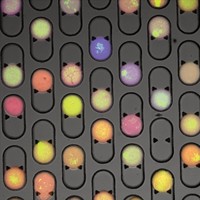Advertisement
Grab your lab coat. Let's get started
Welcome!
Welcome!
Create an account below to get 6 C&EN articles per month, receive newsletters and more - all free.
It seems this is your first time logging in online. Please enter the following information to continue.
As an ACS member you automatically get access to this site. All we need is few more details to create your reading experience.
Not you? Sign in with a different account.
Not you? Sign in with a different account.
ERROR 1
ERROR 1
ERROR 2
ERROR 2
ERROR 2
ERROR 2
ERROR 2
Password and Confirm password must match.
If you have an ACS member number, please enter it here so we can link this account to your membership. (optional)
ERROR 2
ACS values your privacy. By submitting your information, you are gaining access to C&EN and subscribing to our weekly newsletter. We use the information you provide to make your reading experience better, and we will never sell your data to third party members.
Biological Chemistry
Biofilm Turf Wars
Observation of a growing biofilm reveals rapid evolution of an exploitative interaction between bacterial species
by Sarah Everts
January 31, 2007

Bacterial biofilms are responsible for the plaque on your teeth as well as persistent infections on medical devices, but how hundreds of species of competing bacteria coexist in these organized communities has been a conundrum. Now, researchers in Denmark and New Zealand have made the first direct observation of the evolution of bacterial relationships in a biofilm (Nature 2007, 445, 533).
Søren Molin, a microbiologist at the Technical University of Denmark, and his colleagues started with two different species of bacteria. The first metabolizes benzyl alcohol into benzoate, an essential carbon source for the second bacterial species. Although the two species initially live separately, several days and 40 generations later, the interaction between the two bacterial species consistently had evolved toward an exploitative relationship within the biofilm that they become.
In particular, the species that requires the benzoate as a carbon source develops mutations in a gene involved in lipopolysaccharide biosynthesis, providing the bacteria with a particularly "sticky exterior," says Paul B. Rainey, an evolutionary geneticist at the University of Auckland, in New Zealand, and a coauthor on the paper. "This allows the benzoate utilizer to grow as a mantle over the bacteria that provide the carbon source."
"For years, researchers have known that spatially structured systems, like biofilms, can facilitate metabolic interactions between different bacterial species," comments Matthew Parsek, a microbiologist at the University of Washington. "This study is the first to show that adaptive evolution can shape these types of interactions."
"This paper is very important and especially useful," adds J. William Costerton, a microbiologist at the University of Southern California. "We see very complex integrated bacterial communities in the environment, but we never get the chance to watch them develop."
What came as a surprise, Molin says, is that the evolution of the exploitative relationship causes the biofilm to grow. Even though one bacterial species eventually evolves to nearly overwhelm the very species on which it is dependent, the net size of the biofilm consistently increases, showing that the evolution benefits the overall community, if not every individual member.
The more scientists understand about biofilm formation, the better the chances of developing strategies to destroy them, argues Rainey. Parsek adds that the research will provide insight for "engineering biologically driven processes involving multiple microbial species."







Join the conversation
Contact the reporter
Submit a Letter to the Editor for publication
Engage with us on Twitter